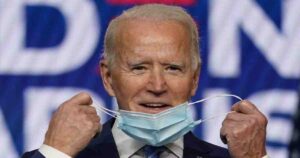Geneva, 24 Jun (D. Ravi Kanth) – The European Union has called for the elimination of tariffs and potential “non-tariff” barriers on more than 120 “pharmaceutical goods” and “medical goods” on grounds that the current Covid-19 pandemic requires a global response. In a recent “concept paper” on “trade in healthcare products”, the EU has suggested that WTO members must now consider comprehensive tariff elimination on pharmaceutical and medical goods in order to combat the Covid-19 pandemic as well as future pandemics.
The EU’s concept paper, if it becomes a basis for negotiating a sectoral agreement at the WTO for tariff elimination on pharmaceutical and medical goods, would wipe out permanently the prospects for strengthening the pharmaceutical industry in developing countries, said a trade envoy, who asked not to be quoted.
The EU’s 14-page concept paper says that “trade policy is part of governments’ crisis response toolbox, and a number of countries have already unilaterally suspended import duties on healthcare products, making access to them more affordable.”
While remaining indifferent to calls from developing countries at the informal TRIPS Council meeting on 19 June to enhance flexibilities to ensure that the WTO’s TRIPS Agreement does not impose barriers for availing of vaccines and therapeutics, the EU has argued that the import tariffs on pharmaceutical goods and medical goods affect “the poor and the sick proportionally more than the rich or the healthy.”
“This is true not only in poorer countries compared to richer ones but also within countries between different income groups,” the paper argues.
It mentions that “for fear of not being able to secure the relevant supplies, many countries have resorted to various forms of export restrictions which have led to disruptions in supply chains, transport delays, as well as price spikes for essential life-saving supplies.”
Significantly, the export restrictions on requisite pharmaceutical products and medical goods were imposed by developed countries such as the United States, as well as some countries in the European Union, the trade envoy said.
These export restrictions, according to the EU, exacerbated the particularly difficult economic situation of the least developed WTO members who lack the manufacturing capacity of medical supplies and who, through the imposition of export restrictions by their developed partners, were cut off from access to essential medical goods.
Instead of removing the export restrictions on pharmaceutical products and medical goods and enhancing the TRIPS flexibilities, the EU says that “facilitating international trade in healthcare products contributes to making supply chains more resilient and diversified, and strengthen preparedness for future health shocks. International trading opportunities also incentivize greater production in the sector, as companies can serve the global, as opposed to only the domestic market.”
The EU has also justified the tariff elimination plan for more than 100 products in the pharmaceutical and medical sectors under the United Nations Sustainable Development Goal (SDG) 3 to “achieve access to safe, effective, quality and affordable essential medicines and vaccines for all”.
“Such an initiative could consist of possible enhancement of the current WTO disciplines applicable to trade in essential goods, a scheme of collaboration in times of crisis as well as the reciprocal elimination of tariffs (zero-for-zero) on pharmaceutical and medical goods with a binding effect,” the EU has argued.
Effectively, the EU is now using the UN SDGs to promote permanent tariff elimination for pharmaceutical and medical goods that will have far-reaching implications for developing countries where the pharmaceutical sector, particularly for manufacturing key drugs needed for major respiratory and other diseases, is still in its nascent phase.
Except for China, India, Brazil and South Africa among others, most of the developing and least-developed countries do not have manufacturing facilities in the pharmaceutical and medical sectors, according to several studies and publications.
In Part A of the concept paper, the EU has listed more than 100 items that “potentially could be subject to tariff elimination.”
Part B of the EU’s concept paper has discussed “potential non-tariff barriers that would be applicable primarily in crisis situations, but which could also become standard practice,” subject to a review.
Part C “identifies possible disciplines that would apply at all times, irrespective of any crisis.”
The EU says that “the 1994 Pharmaceutical Tariff Elimination Agreement (the Pharma Agreement) provides for tariff elimination for finished pharmaceutical products as well as active ingredients defined by the WHO International Non-proprietary Names (INNs) and intermediate products.”
The parties to the 1994 plurilateral Pharma Agreement include the EU, US, Switzerland, Japan, Norway, Canada, and Macau (China).
At the time when the so-called Pharma Agreement was concluded in 1994, the parties to the plurilateral agreement accounted for around 90% of trade in the covered products.
Currently, the members of the Pharma Agreement account for about 66%, “as other WTO Members have increased their presence in the global pharmaceutical market, without participating in the Agreement.”
Obviously, several developing countries, particularly China and India, made significant progress for increasing their share in the global market for pharmaceutical and medical items without joining the plurilateral agreement.
The EU says that “out of 164 WTO members, 130 (or 80%) continue to impose an extra cost on the medicines needed by their citizens.”
But China, India, Brazil, and South Africa among others have made progress in providing key pharmaceutical drugs to their populations at affordable prices, especially in the segment of non-patented drugs.
The EU noted that the WTO Secretariat on 4 May suggested that “the non-participating WTO Members would be invited to acquaint themselves with a consolidated version of the Agreement, as prepared by the WTO Secretariat (JOB/MA/142 of 4 May 2020).”
According to the EU concept paper, in addition to pharmaceutical products, there is a strong public health case for eliminating import duties on medical supplies, medical and protective equipment.
The EU says that “many of the products have already been covered by the Expansion of the Information Technology Agreement of 2015, with some notable exceptions such as ventilators/respirators.”
However, many developing and least-developed countries, including India, South Africa, and Brazil did not join the plurilateral ITA-2 (Information Technology Agreement).
The ITA-2 was concluded on the margins of the WTO’s tenth ministerial conference in Nairobi, in December 2015.
According to the recent report of the WTO Secretariat, in general, the average applied MFN tariff on medical goods (including COVID-19 related) by all WTO Members is around 4.8%, which is lower than 7.6% tariff for all industrial products.
“In addition, more than half of WTO Members impose applied tariffs lower than 5%,” according to the concept paper.
The EU argues that “tariffs on medical equipment do not have an important role in protecting domestic industries against competition from abroad, but rather constitute a source of government financing in the form of a consumption tax” and “removing tariffs on medical equipment and other WTO Members joining the Information Technology Agreement would be relevant actions in this regard.”
Further, the “dual-use” character of the products such as “masks/respirators, gloves, goggles, garments, ventilators as well as hygienic and disinfectant products” used during the current Covid-19 pandemic may “possess characteristics that make then equally fit for some industrial and civil applications such as construction, food processing, or household use.”
“The dual-use character of these items has brought a question whether a permanent tariff elimination initiative should also cover them,” the EU has argued.
The EU says that “even if the whole universe of medical and protective equipment would not be subject to permanent tariff elimination, the participants could be encouraged to eliminate tariffs on these products in emergency situations, depending on the nature of the crisis at hand.”
Moreover, Brussels wants these items to be treated as “essential goods” subject to the determination by the World Health Organization as a list of priority goods for tackling the Covid-19 health crisis.
The list of products could also include any vaccines or effective treatment, the EU has suggested.
In short, the Covid-19 pandemic seems to have become the perfect storm for the EU and other developed countries for foisting permanent tariff liberalization in pharmaceutical and medical products.
The EU’s gambit for “trade in healthcare products” could permanently undermine the prospects for developmental industrialization in developing and least-developed countries.
(Published in SUNS #9146 dated 25 June 2020) – Third World Network




